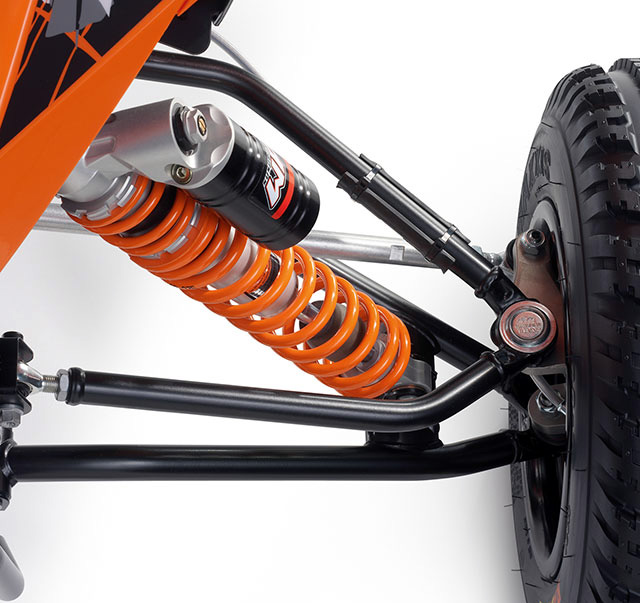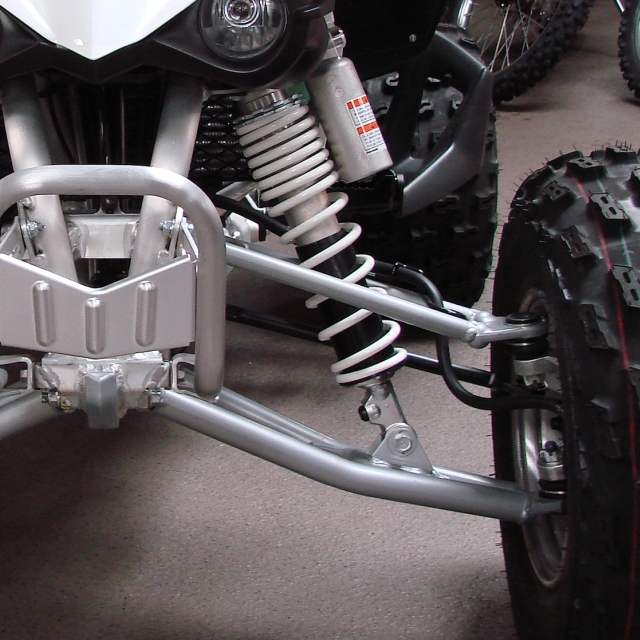ATV Suspension: Sprung Versus Unsprung
Yes, Where the Weight is Located on Your ATV Makes a Difference
Dear ATV Connection:
Could you clarify what is meant by sprung and unsprung weight and which has greater impact on an ATV’s handling?
The concept of sprung and unsprung weight is often the source of great misunderstanding despite the fact that the name itself does do a decent job of definition. Sprung weight refers to any and all of the vehicle’s weight that is supported by the shock’s springs. This includes the frame, engine, bars/controls, plastic, seat, and even the rider (when on board). Unsprung weight is that which exists below the springs: hubs, tires, tubes, lower A-arms and so on.


As you might suspect, you’ll feel the sprung weight of a vehicle in a greater variety of situations (like say pushing your quad up a loading ramp for example). Things get tricky once you stop to realize that it is the unsprung weight that is closer to the ground and hence affects the handling of an ATV most over repetitious terrain. In other words, were you to shed pounds of unsprung weight off your machine, the biggest gains would be felt when pounding over bumps, roots, rocks, or chop. The reason for this is that the more weight tacked on to the bottom of the shock absorber, the more energy is required to bring the whole mass to a stop.
On the flip side hard landings, or the impact from casing a jump is less affected by the amount of unsprung weight being lugged around by your quad since they are singular events (and not repetitive motions).
Now onto the really mind-boggling stuff- what about the shocks (and springs) themselves? They have weight that is neither above nor below themselves so are they considered sprung or unsprung weight? The simple answer is 50/50- they are both sprung and unsprung and here’s why. To the chassis and all of the sprung weight sitting atop the shock, the shocks themselves are considered part of the unsprung mechanism. To the wheels, which push upward against the springs as if they were a part of the chassis itself, they are sprung. Since those two forces oppose and meet in the middle of every single motion of your quad’s suspension, the relationship evens out at 50/50. If you really want to get technical, the weight of a compressed spring differs from an uncompressed so there is some scientific variation to consider (called “hybrid weight” for all of the aspiring scientists out there). For all practical purposes, however, riders needn’t be concerned with such miniscule variables.
